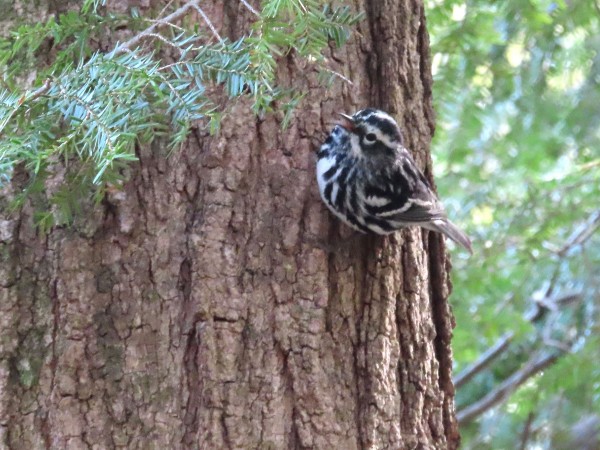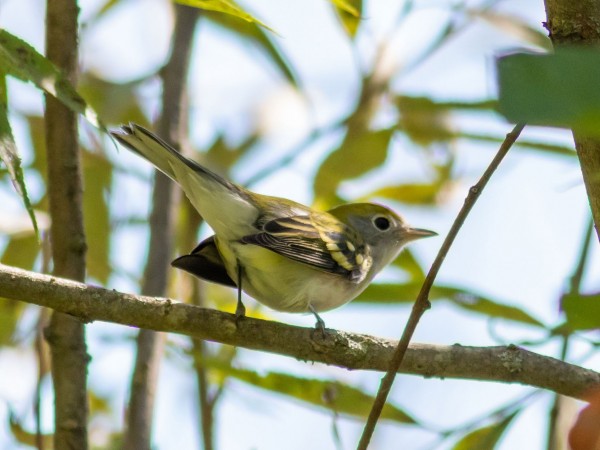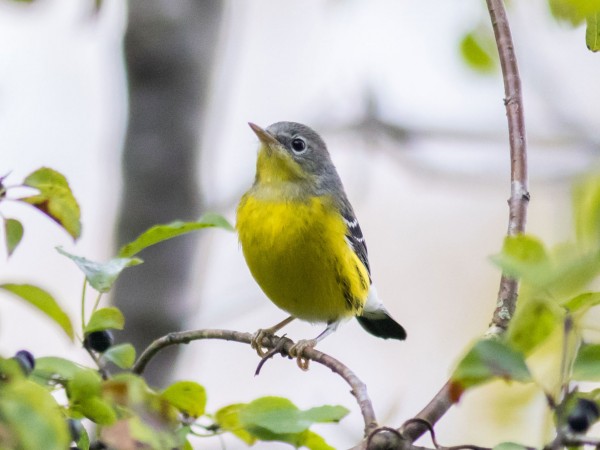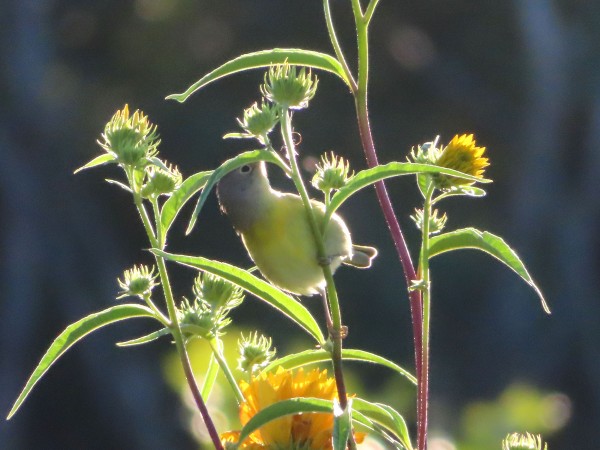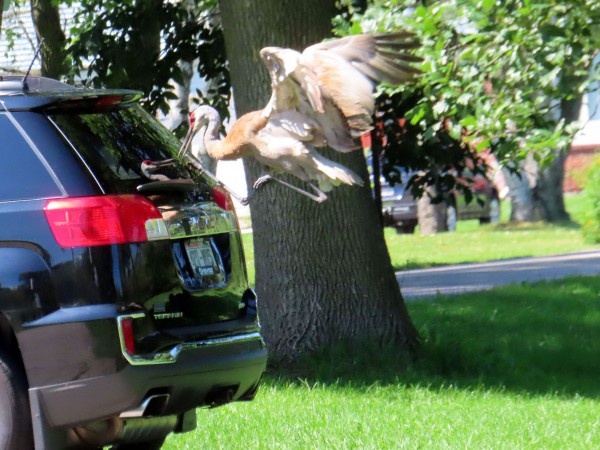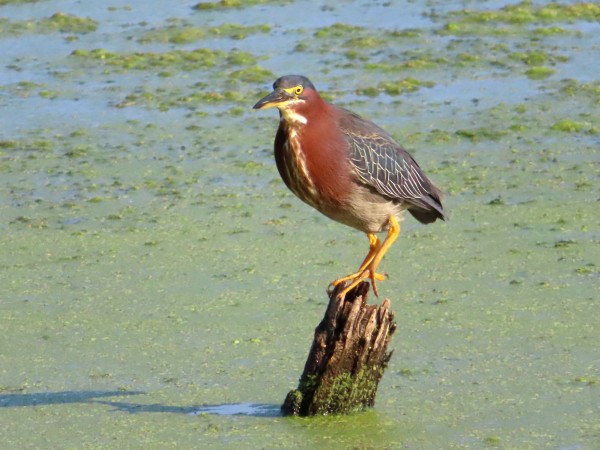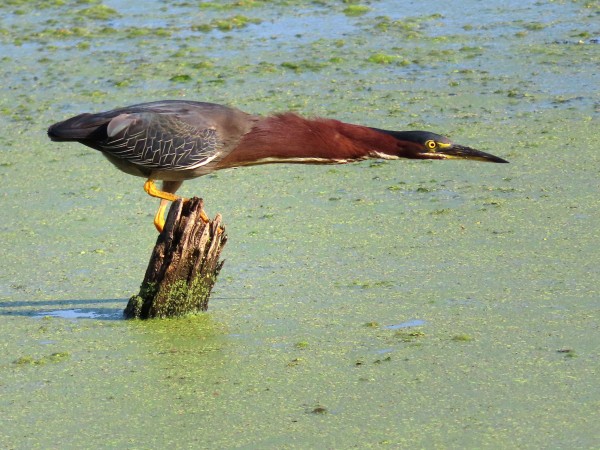Chuck's Birding Report #75
17 August - 23 August 2021
Dear fellow flock of birders,
The wildflowers and grasses are really doing well because of the rain we’ve had this past week. I’m sure there are new plants but they are not the big showy plants I’ve mentioned in my past report so I don’t have new plants to report this week. Some of the older plants are beginning to go to seed and the seed eating birds are feasting.
The focus of my bird report today is on the arrival of more warblers heading south. Birders have seen more and more species of warblers in the county and in the Arboretum this past week. Is there a way to determine what day might be a good birding day with more migrating birds (especially warblers) coming down from the north? Yes there is. eBird put out by Cornell Lab of Ornithology uses a radar technique that can track bird migration. If you go to Birdcast on eBird there are videos showing the entire US and the migration of birds over a days time or up to the present time. I suggest that you go to Birdcast at 10:00 or 10:30 at night (11:00 or 11:30 Cornell time) to check out how good the migration is over Wisconsin. The relative number flying over Wisconsin is color coded with bright yellow being a very heavy migration. Last Saturday night I checked Birdcast and the whole state of Wisconsin was glowing yellow. I went birding in the Arb and was not disappointed. I was able to find 8 species of warblers in the Arb. They weren’t all in one place but sprinkled around. I was over the moon.
As I mentioned last week most fall warblers are in a plumage that is more subtle and less showy. They want to get to their winter habitats without being taken by predators thus the drab plumage.
I included photos of five different species of warblers in fall plumage. I’m not going to describe how each is different from its spring or breeding plumage but let you look up (Google) the spring plumage of each and decide how the fall plumage differs from the spring. Some species don’t change much while other are really different and can even look similar to other species. I find it difficult to identify certain species in fall plumage.
The first photo is of a Black-and-White Warbler. Its plumage does not change much but might be a bit more drab. Its behavior of climbing on tree trunks and branches similar to White-breasted Nuthatches is most distinctive from other warblers. The second and third photos were donated to the report by Kris Perlberg, a great birder and photographer. The two species are the Chestnut-sided Warbler and the Magnolia Warbler. Their fall plumage is quite different from their spring. The last two photos I took on Sunday are of the Nashville Warbler and the Tennessee Warbler, both eating seeds from one of the tall yellow-flowered wildflowers. Their plumages are somewhat different but not as great as the previous 2 species.
Becoming good at IDing fall warblers will take some studying. Good luck!
The Eastern Kingbirds are continuing to arrive. They love to eat the Elderberries but a couple days ago I found them eating a berries from a plant I haven’t mentioned before. It is called Pokeweed. The berries start out green and when ripe are dark purple. It is a showy plant because of all its bright pink stems. The included photo shows the Pokeweed near the bottom and the Eastern Kingbird perched on a branch above having just plucked a berry.
Today after the rained stopped I went birding at the south end of Gardner Marsh. I counted 70 Wood Ducks most of whom were perched on downed snags at the north edge of the pond along Carver St. They are all in that eclipsed plumage still but should change to their breeding plumage in the next month or two. I also saw a family of 4 Sandhill Cranes, two adults and 2 colts, walking near Carver St. As I was looking at other birds I began to hear this pecking noise. I looked around and saw one of the adult cranes pecking on a black car. Keeping my distance I realized that the crane could see its own image reflected from the car. Not only did it peck at that image but it also attacked the image on the car by jumping up and thrusting its feet and claws at the car. As a result the car can no longer fly. A photo of the attack is attached.
My last two photos are of Green Herons. I saw a couple at Gardner Marsh this moring but the photos of the Green Herons that are included were taken elsewhere in Dane County. The one photo shows the normal stance of the Green Heron while looking around for food. The other photo shows how surprisingly far Green Herons can extend their necks to go after food like fish or frogs.
That’s the bird report for this week.
Good health to all of you and good birding too,
Chuck

